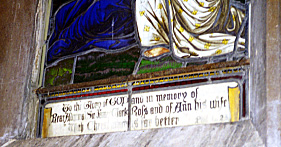
I recently spent some time in the UK. The airfare was so low ($198 roundtrip) how could I pass up an opportunity to visit friends and track down some Low-Latitude Antarctic sites (82 in all)?
Let's start off with some places associated with Sir James Clark Ross, namesake of the island, the ice shelf and the sea, and commander of the ships, Erebus and Terror. His London house (135) at 2 Eliot Place SE3 overlooks Blackheath. Recently renovated, its brick facade sports a LCC blue plaque: "Sir James Clark Ross 1800-1862 Polar Explorer Lived Here."

His country house is far grander. Aston House (196) is in the attractive village of Aston Abbots (blessed with two pubs), 5.5 miles northeast of Aylesbury, Buckinghamshire. Now called Abbey House it was briefly the seat of the Czech government in exile during the Second World War. Now a private residence, the exterior is said to be unchanged from Ross' day. Out back, just visible from the road through the brambles is a small pond containing two islands: Ross named them Erebus and Terror.

Near the entrance drive to the house stands St James the Great (151), the handsome village church. The east window bears a memorial inscription: "To the glory of God and in memory of Rear Admiral Sir James Clark Ross and of Ann his wife."


In the churchyard are the graves of Ross, his wife and their only daughter, Ann Barker. Apparently the elevated horizontal tomb was carted off sometime ago, restored, and reassembled. The inscriptions read:

On long side facing the church: "In affectionate memory of Rear Admiral Sir James Clark Ross Kt. FRS Arctic and Antarctic Explorer and Discoverer of the North Magnetic Pole who departed this life at Aston Abbots House April 3, 1862 Age 62 years. Deeply lamented and regretted." At the base: "I know that my Redeemer liveth and that He shall stand at this latter day upon the Earth."
On the end facing the road: "Sir James Clark Ross Kt. Born April 15, 1800 Died April 3, 1862"
On long side away from the church: "In affectionate remembrance of Ann, the beloved and deeply lamented wife of Admiral Sir James Clark Ross Knt., the eldest daughter of the late Thomas Coulman, Esq., Whitgift Hall, Coole. Lady Ross was born on the 17th of January 1817 Died on the 25th of January 1857. Blessed are the dead which die in the Lord."
On the end facing away from the road: "Lady Ross born January 17, 1817 died January 25, 1857"
On top of the tomb: "In affectionate memory of Ann Barker, only daughter of Sir James Clark Ross and Ann his wife and widow of William Barker DD, Dean of Carlisle born 26th July 1846 died 30th November 1922."
By the way, my guide was Mrs Shirley Ford, the village historian, who appropriately lives in Ross Road (224). [Far away, in the Falklands at Stanley, there is also a Ross Road (227) and a James Street (351).] During my visit to Stanley, what should be astern of us but the British Antarctic Survey ship James Clark Ross (436).

UPDATE: Neil Rees has e-mailed to offer an update and some corrections. The pubs of Aston Abbots have sadly diminished in number to one. "The country house of Ross was called Aston House but is now called The Abbey not Abbey House. ... It was not the seat of the Czech government in exile during the Second World War, but the residence of President Benes of Czechoslovakia. The government in exile were in London."
(26 July 2005)